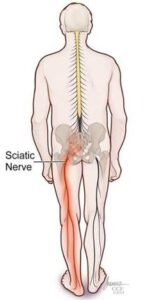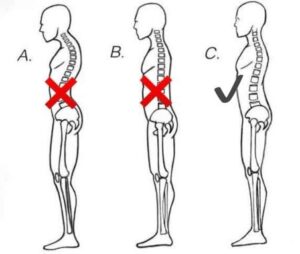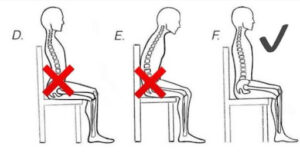What is sciatica and how can we help?
Have you ever heard the following statements, “I was told I have sciatica”, “my sciatic is killing me”, “I was diagnosed with sciatica”? Sciatica or sciatic pain has been seen to affect as high as 40% of the general population with most instances occurring in those in their fourth and fifth decades of life. While many risk factors may predispose someone to developing sciatic pain, this population tends to be more at risk due to age-related changes that often occur within the musculoskeletal system. Other risk factors associated with sciatic pain may include sedentary lifestyles and professions that require people to lift heavy loads for prolonged periods.
Before we examine the causes of sciatic pain and the ways physiotherapy can help, let’s begin by debunking the myth that sciatica is a diagnosis. While the term sciatica or sciatic pain is often misused as a diagnosis or specific condition, it simply refers to symptoms. The term sciatica is used to simply describe the symptoms that arise as the result of irritation of the sciatic nerve but does not specify the cause of these symptoms. The cause of this irritation can vary significantly depending on the person which will therefore affect individualized treatment plans and rehabilitation.
Let’s talk anatomy! As seen in figure 1, the human body is comprised of nerves that follow trajectories all throughout the body. The sciatic nerve is the large nerve that follows along the back portion of the leg. As previously mentioned, when used correctly, the terms sciatica or sciatic pain are descriptive terms as they describe the pain and/or numbing and tingling that travels along the path of the sciatic nerve but do not refer to a specific diagnosis (see figure 2). Sciatic nerve pain can occur at any time that it becomes compressed. While this compression can occur high up near the nerve root, it can also become compressed anywhere along its path.

Figure 1. Nervous System
https://en.wikipedia.org/wiki/Nervous_system

Figure 2. Sciatic nerve pain
https://my.clevelandclinic.org/health/diseases/12792-sciatica
In regards to symptoms, while many people with sciatic pain will complain of pain and/or numbing or tingling that radiates from the low back down the leg(s) and occasionally into the foot, this is largely dependent on the nature of the nerve compression. In some cases, people may exhibit neurological symptoms from this compression such as: muscular weakness, difficulty walking, altered sensation, burning sensations, and altered reflexes.
Sciatic nerve compression can be caused by various things such as degenerative disc disease, bulging or herniated disc, lumbar stenosis, or a non-specific musculoskeletal condition (see figure 3). In the case of degenerative disc disease, bulging or herniated disc, and lumbar stenosis, the compression occurs high up along the nerve whereas in many musculoskeletal causes, the compression occurs lower down along the nerve’s trajectory. As seen in figure 3, an example of a musculoskeletal case is “piriformis syndrome” where the sciatic nerve is compressed by the piriformis muscle (see figure 3). While the pain is most often unilateral, meaning it affects only one side of the body, symptoms may at times affect both sides depending on the cause of the compression.

Figure 3. Causes of Sciatica
https://www.sportscarept.com/sciatica-the-backstory/
While not all cases of sciatica can be prevented, staying active and using proper form during activities can reduce the incidence of developing sciatic pain and decrease symptoms by reducing the compression and resulting irritation of the nerve. Although some cases of sciatica will require surgical intervention, most cases improve with conservative treatment. Depending on the cause of the compression, rehabilitation and exercise treatment plans may vary significantly.
As previously mentioned, while certain risk factors such as age, lifestyle, and occupation may predispose someone to developing sciatic pain, incorrect movement patterns have been found to be a predictor of low back pain in the first place. Until the development of proper movement patterns and adequate strengthening take place, activities that put undue stress on the lower back or require sudden twisting movements should be avoided. Instead, emphasis should be placed on maintaining a neutral spine during activities to reduce stress on the structure contributing to pain (see figure 4). Physiotherapists are trained in injury and movement assessment and can help you identify both the cause of your pain and the movement patterns that may be contributing to your pain. While there are numerous resources online regarding strengthening and stretches for sciatic nerve pain, since the cause of the nerve compression can vary, assessment in crucial in determining the best treatment plan and exercise program for the patient. Come visit our team of health care professionals at Advantage Sport medicine for an assessment and to get back to doing what you love.


